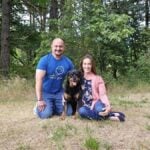


Home » The Eurasier – History, Coat Colors & Construction
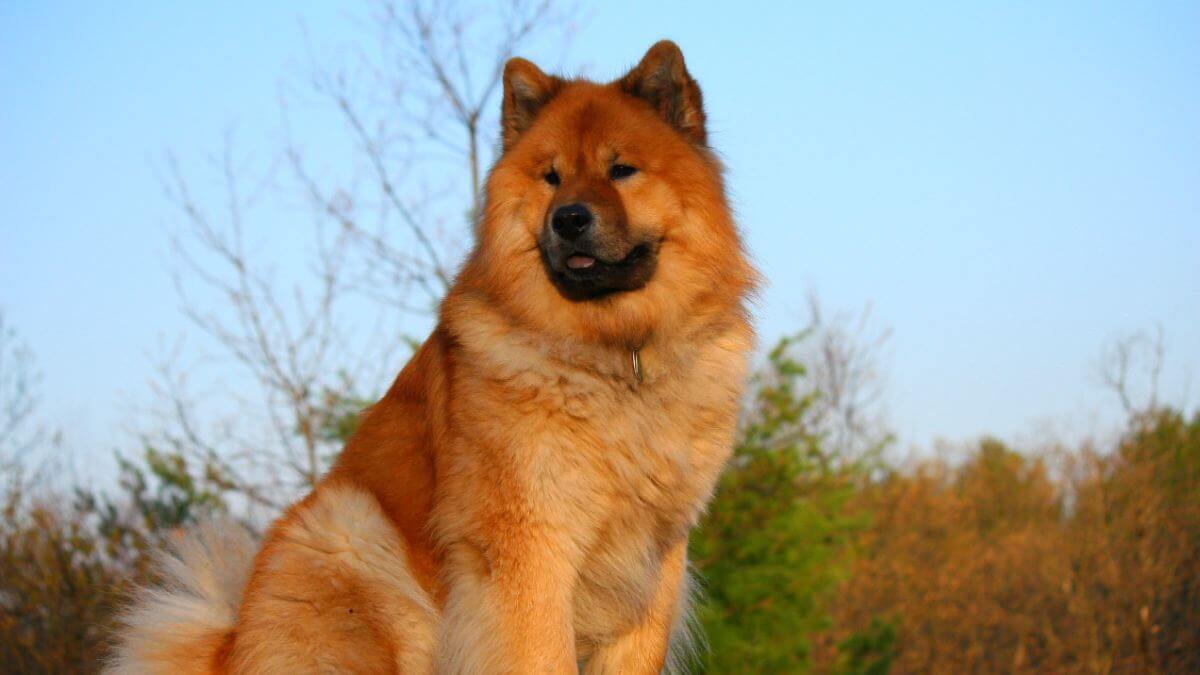
The Eurasier breed was established first and foremost to be the ideal family pet. Its history is closely linked to the community that loves it and their shared desire for a dog that excels in its role as a family companion while also demonstrating the adaptable, primitive-like behaviors of its canine ancestors. Today, the Eurasier is just that: a dog who can adapt to a variety of lifestyles, whether urban or rural, whose only true need is closeness with its family. Stoic and reserved with strangers, but charming and joyful with its people, the Eurasier is a wonderful pet.
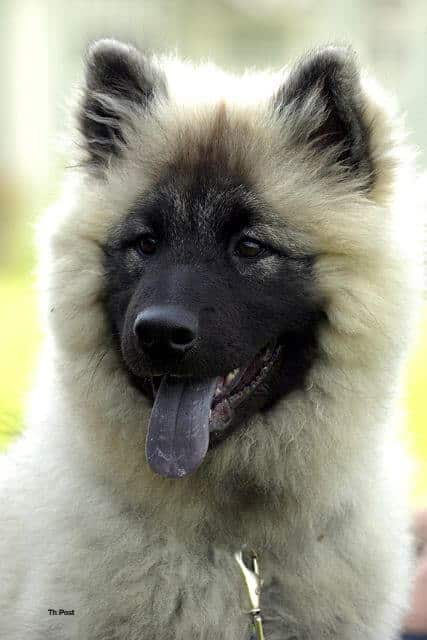
In the years following World War II, lifelong canine enthusiast Julius Wipfel befriended a black dog he affectionately named “the Canadian.” It’s believed this dog was left behind by Canadian troops when they vacated Germany. Wipfel described the dog as independent, charming, intelligent, and unrestrained. After the Canadian’s passing, Wipfel sought a successor to his big, black, Spitz-type dog and adopted a female Wolfspitz (Keeshond). Although life with this Wolfspitz was by far easier than with his independent black dog, Wipfel nevertheless missed the “primitivity” of his first dog.
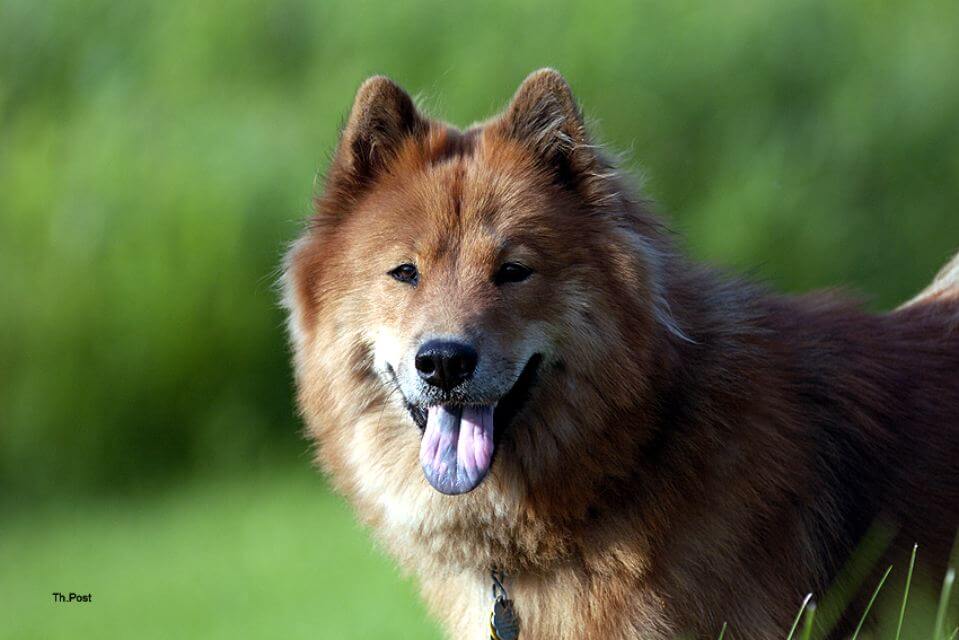
He desired a dog that would show the adaptability and social behavior of the dog’s ancestor, the wolf, but a dog that would also be a wonderful family companion. With that goal in mind, Wipfel set out to create a new breed. The foundational litters of what would eventually become the Eurasier were whelped in 1960. These dogs—then called Wolf-Chows, as they were Wolfspitz (Keeshond) and Chow Chow crosses—were selectively bred to one another in the following years, with the Samoyed introduced into subsequent pairings. From these efforts, a new breed began to emerge, with a distinct phenotype and temperament solidifying with each generation.
In 1973, the decision was made to outcross to the Samoyed, and with this came FCI recognition just twelve short years after the breed’s inception. Wipfel and the early Eurasier proponents had the foresight to avoid one basic mistake: breeding was performed for proper temperament and good health, with no regard to coat color. As a result, the existing genetic pool was never split up, and today’s Eurasiers can be seen in a variety of colors. For those interested in the genetics behind the phenotype, Eurasiers carry genes for every coat color on the A locus: AY – Cream or Red, AW – Wolf gray or Wolf sable, AT – Black and Tan, and A – recessive Black. Their coat colors are also influenced by the I locus, which controls the intensity of red pigmentation. Additionally, Eurasiers carry traits that control for a white “reverse mask” and a melanistic black mask, making each dog quite unique. There is a host of variety in the coat colors, all of which are equally acceptable, though white, piebald, and liver coloring—while naturally occurring—are disqualifying faults.
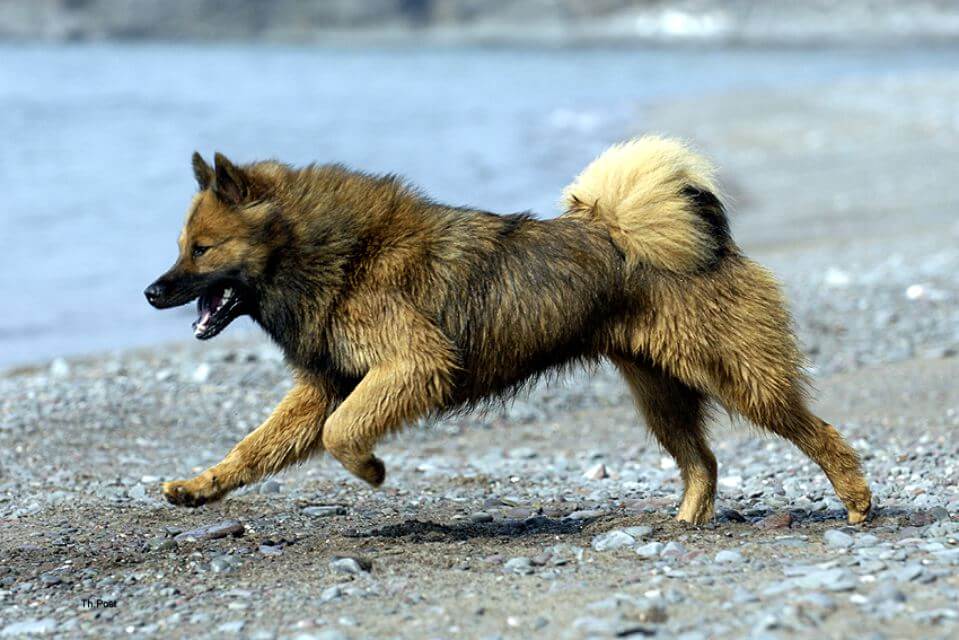
Moreover, although the paw pads, nose leather, lips, and eye-rims all call for black or dark pigmentation, one area where the Eurasier isn’t picky is the tongue. Like their Chow Chow forebears, Eurasiers often have a deep purple or black tongue. However, unlike the Chow Chow, a pink tongue is not a disqualification, nor is a pink tongue with dark spots—regardless of size or location—considered a fault.
Looking beyond coat color, the Eurasier is the picture of moderation in their construction. They are of a moderate size with a moderate energy level, a moderate coat, and moderate angulation. While they are considered to be well-angulated for a spitz breed, they offer no extremes that draw attention to one aspect of the whole and are quite natural in their overall appearance. A “fluffy” breed by anyone’s definition, their double coat does not fall and hang from the body, nor is it so extreme in its length that it disguises the contours of the body. Their expression, too, should be without excess; in the Eurasier, balance is the name of the game.
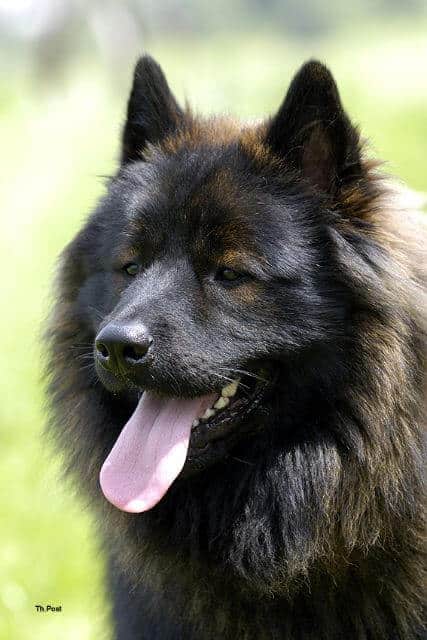
The Eurasier’s disposition is calm, self-assured, and even-tempered, with a high resistance to provocation. With family, they are charmingly happy and adaptable to their people’s lifestyles. Their moderate energy level and desire to go with the flow of the day contribute to their role as the ideal family pet. While their appearance evokes that of a primitive spitz, they do not possess the strong drive to hunt or work seen in other spitz breeds. They are not like hunting spitzes such as the Norwegian Elkhound, Karelian Bear Dogs, or even the Finnish Spitz. As with most dogs, they enjoy enriching activities such as chasing backyard critters, following their nose, and playing games with their people, such as training or hiking.
Their role as a companion dog does not predispose them to the biddable nature of other famous companion breeds. They fall somewhere in the middle: relaxed, ambivalent, and deeply dedicated to their family in a way that charms all who know them. With strangers, they are relaxed and unobtrusive; they should be reserved, watchful, and alert without being nervous or wary. They are quiet, barking only occasionally to alert. To fully develop these qualities, the Eurasier needs constant, close domestic contact with their family, and understanding yet consistent training. Socialization throughout the Eurasier’s lifetime helps them embrace new circumstances while remaining adaptable, self-assured, and confident.
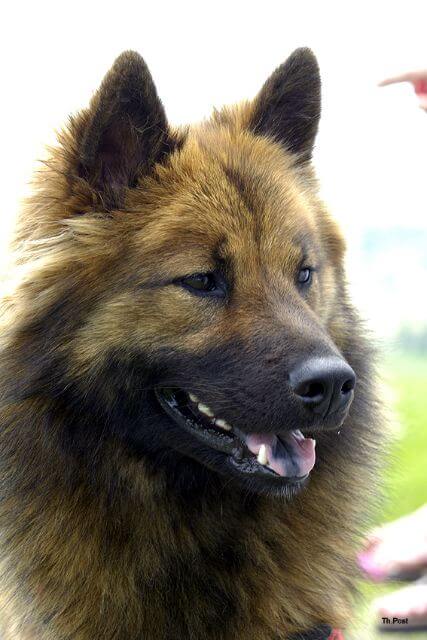
Being such a modern breed in its history and purpose, and so distinct in appearance without grandeur or excess in construction, the Eurasier fills a niche as a companionable, moderate-energy breed that fulfills the role of the contemporary family pet. Although they may not be top contenders in higher-intensity sports, the Eurasier’s love for games, adaptability, and their zest for life make them a breed that those who know them are tremendously passionate about, and hope to share that passion with others in the dog fancy in the United States for years to come.